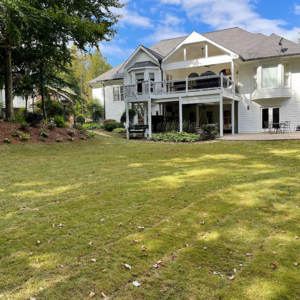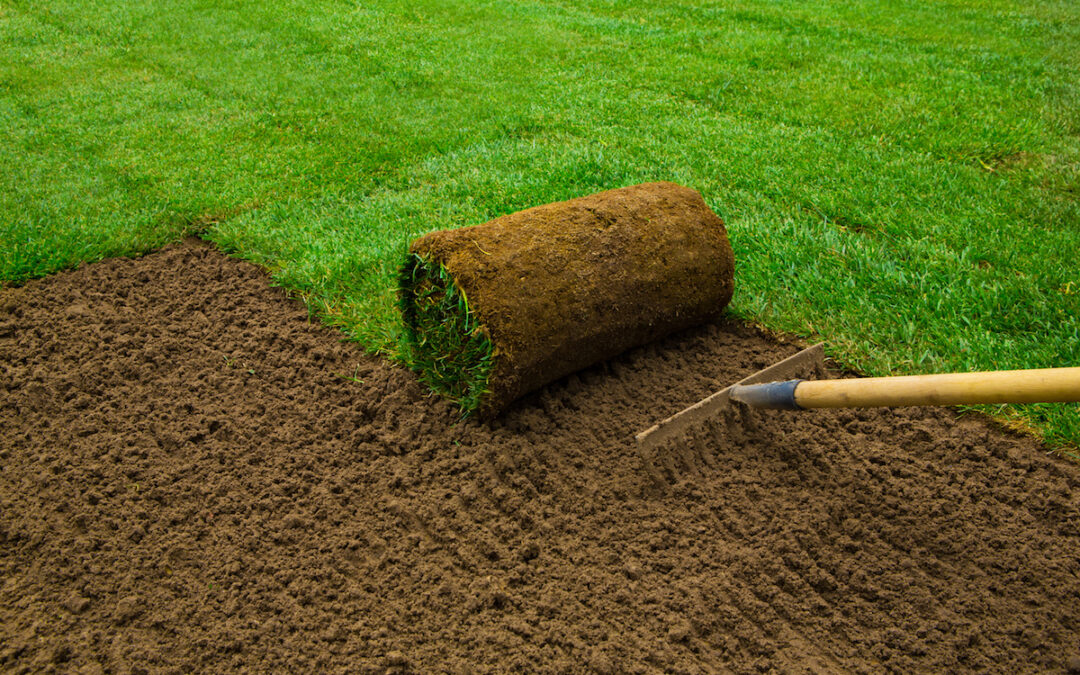The perfect lawn is one that’s green all summer long. So when exactly should you plant new grass or install sod?
There are a lot of factors to consider here, but the basic answer is: as soon as possible, if you want it to survive. If you’re planting seeds, start in early spring (or late fall in warmer climates). If you’re installing sod rolls or laying down small patches by hand, make sure not to put them down too late—it can be difficult for roots to take hold in frozen or waterlogged soil. And if your soil is already frozen and wet? Well then, maybe don’t plant anything this year at all!
It’s easiest to install sod when the soil is warm and dry.
 For the healthiest and best-looking lawn, it’s best to install sod when the soil is warm and dry. While you can still do this in cool weather, it’s much easier on both you and your new grass if conditions are right. Here are some tips for making sure your soil is ready:
For the healthiest and best-looking lawn, it’s best to install sod when the soil is warm and dry. While you can still do this in cool weather, it’s much easier on both you and your new grass if conditions are right. Here are some tips for making sure your soil is ready:
- Dryness – Watering should be complete at least two weeks before installation so that there isn’t any standing water left on top of newly laid sod strips. If there’s still rain in sight, consider waiting until after it passes before starting the process; otherwise, any excess moisture could lead to mold growth or root rot issues later down the line (not what we want!).
- Warmth – Just like people need warmth for their bodies’ internal systems to function well–like digestion–so does grass! For optimal growth rates during springtime months when temperatures tend toward cooler side of things like 40 degrees Fahrenheit (4 C), try not putting down new patches until temperatures rise above 50 F (10 C).
Soil – Your soil should be loose and easy to work with when laying down your new sod. If it’s too compact or hard, consider adding in some organic matter like compost or manure to loosen things up.
Proper watering – Proper watering is key for new sod. You should water it at least twice a day for about 20 minutes each time to help keep the roots from drying out too quickly.
After a couple of weeks, you should reduce your watering to once a day for about 15 minutes.
It’s important to note that if you’re putting down your new turf in the springtime, it will take a few weeks for it to establish itself and begin growing at a healthy rate. If you’ve been working on your yard all winter long and are itching to get started on new projects like adding plants or installing
Sod can be broken apart by frost, so you need to have it in place before the first cold snap arrives.
Sod is best installed during the spring or fall, when temperatures are milder. If you’re installing sod during the summer months and it’s hot outside, make sure to water frequently so that it doesn’t dry out too quickly.
If you don’t have the sod in place before winter arrives (or even if you do), your new lawn could be damaged by frost. Sod will break apart if frozen soil freezes it from below, so make sure that all loose dirt has been removed from around each piece of grass before laying down new lawns.
If you have a large area to cover, it can be more cost-effective to install sod in two or three smaller areas rather than one large one. This way, you won’t have to worry about watering as much and your yard will be easier to maintain overall.
If you’re in the market for new sod, make sure that you check out our selection of options. We have many different types of grass available, including buffalo and fescue varieties. You can also find different colors and textures within each type of sod, so we’ll help you choose what works best for your yard.
If you’re planting seeds, you’ll need time for them to germinate and grow into full-fledged plants before the weather turns too cold for them to survive.
If you’re planting seeds, you’ll need time for them to germinate and grow into full-fledged plants before the weather turns too cold for them to survive.
If your goal is to have a lawn ready by Memorial Day weekend or July 4th weekend (or any other occasion where people will be outside), sod may not be your best option because it takes longer than seed or plugs do–especially if you’re installing over an existing lawn with no prep work done beforehand.
If you’re planting grass in the fall, make sure you choose a variety that will withstand cold weather. Some varieties of fescue and Kentucky bluegrass are more resilient than others, so research what’s available before purchasing anything.
If your soil is frozen and wet, it can disrupt the roots’ ability to take hold in new soil, which will make them more vulnerable when they’re exposed to wind or rain later on.
If you want to install sod, it’s best to wait until the soil is warm and dry. If your soil is frozen and wet, it can disrupt the roots’ ability to take hold in new soil, which will make them more vulnerable when they’re exposed to wind or rain later on.
If you’re in a hurry, though, you can still plant sod. Just be sure to water it regularly and protect it from wind or rain until the roots have had time to take hold.
When it comes to installing new sod, you’ll need a rototiller or shovel to break up the soil and make room for the new grass. You also need some seed starter mix (or compost if you have it) to help with drainage. And finally, get yourself some good quality sod.
You can buy sod at your local home improvement store or nursery, or you can ask a friend to give you some from their yard. Make sure you get enough so that the new pieces will line up with the old ones (or at least be close).
If you’re doing a large area of grass, you may be better off buying rolls of sod rather than trying to lay down small patches by hand.
If you’re doing a large area of grass, you may be better off buying rolls of sod rather than trying to lay down small patches by hand. Sod is easier to install than laying down seeds and can be laid down by hand using a sod cutter or more efficiently with a machine known as an “aerator,” which cuts the grass into pieces that are easier for the roots to absorb water from. Sod rolls are also more portable than bricks; they can be rolled up and transported easily without damage, making them ideal for large jobs where transportation costs would otherwise add up quickly.
Sod bricks are generally less expensive than rolls but much heavier (anywhere from 80 pounds per square foot up), so if your property has few access points or limited parking space this could pose an issue when installing them yourself
If you want perfect lawns that are green all summer long, make sure you plan ahead for when you want to plant new grass
If you want perfect lawns that are green all summer long, make sure you plan ahead for when you want to plant new grass.
Sod is easier to install when the soil is warm and dry. If it’s too cold out, there’s a chance your sod will die before it can take root in the ground. On the other hand, if it’s too hot outside (and if temperatures remain above 80 degrees Fahrenheit), then this could lead to excessive growth–which can make mowing difficult since it will be harder to cut through thick blades of grass with a standard push mower or reel mower.
Soil temperature should also be taken into account when deciding when is best for installing new turfgrass: In general, we recommend waiting until after Memorial Day weekend before starting any projects involving sod installation because this marks an unofficial start date for summer weather patterns across most parts of North America (excluding Alaska). This means less risk for frost damage during installation due to cooler conditions still present in early springtime weather patterns across most regions within these states/provinces by then compared with earlier months such as February which tend toward warmer temperatures overall due mainly because winter hasn’t yet ended yet at those times–meaning there isn’t necessarily much difference between January vs April out here just yet!
Conclusion
So there you have it. If you want perfect lawns that are green all summer long, make sure you plan ahead for when you want to plant new grass. And if this is something that concerns you in your own yard, don’t hesitate to contact us! We can help with everything from planting seeds or sod installation so that your lawn stays healthy and beautiful year after year.”

